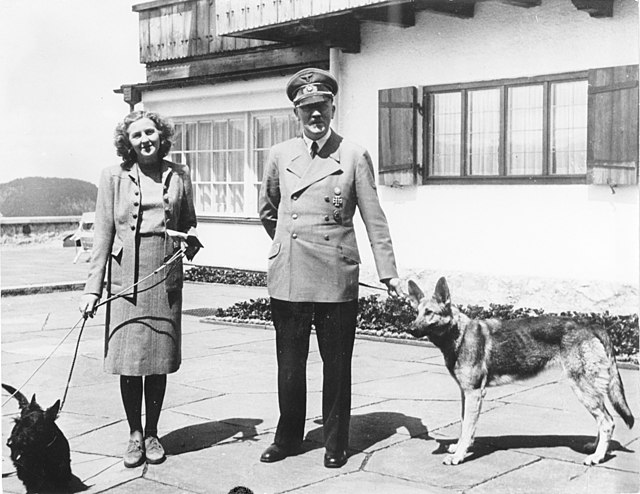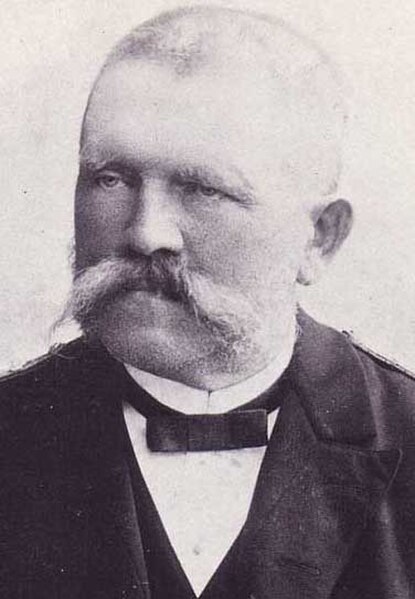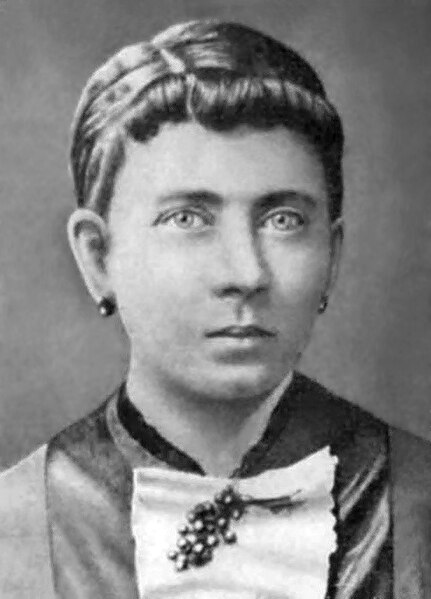Adolf Hitler, chancellor and dictator of Nazi Germany from 1933 to 1945, committed suicide via a gunshot to the head on 30 April 1945 in the Führerbunker in Berlin after it became clear that Germany would lose the Battle of Berlin, which led to the end of World War II in Europe. Eva Braun, his wife of one day, also committed suicide by cyanide poisoning. In accordance with Hitler's prior written and verbal instructions, that afternoon their remains were carried up the stairs and through the bunker's emergency exit to the Reich Chancellery garden, where they were doused in petrol and burned. The news of Hitler's death was announced on German radio the next day, 1 May.
Front page of the US Armed Forces newspaper Stars and Stripes on 2 May 1945
Eva Braun and Hitler at Berchtesgaden (with Hitler's dog Blondi at right), June 1942
Situation of World War II in Europe at the time of Hitler's death. The white areas were controlled by Nazi forces, the pink areas were controlled by the Allies, and the red areas indicate recent Allied advances.
Exterior of the Führerbunker shortly before its destruction. Hitler and Braun's remains were burnt in a shell crater outside the emergency exit at the left.
Adolf Hitler was an Austrian-born German politician who was the dictator of Nazi Germany from 1933 until his suicide in 1945. He rose to power as the leader of the Nazi Party, becoming the chancellor in 1933 and then taking the title of Führer und Reichskanzler in 1934. During his dictatorship, he initiated the European theatre of World War II by invading Poland on 1 September 1939. He was closely involved in military operations throughout the war and was central to the perpetration of the Holocaust: the genocide of about six million Jews and millions of other victims.
Official portrait, 1938
Hitler as an infant (c. 1889–90)
Hitler's father, Alois, c. 1900
Hitler's mother, Klara, 1870s








